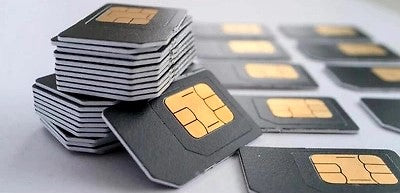
StarLink powered mobile phone sim cards
STARLINK DIRECT TO CELL SERVICE WILL SOON BE AVAILABLE VIA MOBILE SIM CARDS WORLWIDE
The objective of Starlink’s Direct to Cell network is to provide ubiquitous global connectivity by
eliminating traditional mobile dead zones through satellite-to-mobile technology. One year after the first
Direct to Cell enabled satellites were launched into orbit, the Starlink Direct to Cell messaging service is
now live in the United States and New Zealand, with more countries to come in the year ahead. This
milestone required the Starlink team to overcome numerous technical and regulatory challenges to
connect Starlink satellites directly to 4G LTE mobile phones. As a result of these achievements,
Starlink Direct to Cell service is now commercially available in the United States and New Zealand,
enabling satellite messaging service for 4G LTE mobile phones. Over the past year, SpaceX has rapidly
scaled the Direct to Cell network, launching a constellation of over 400 satellites. In 2024, millions of
messages were sent through Starlink Direct to Cell during Beta testing and in emergency scenarios to
provide critical connectivity to the public. The availability of the commercial messaging service is the
first step in our vision of eliminating mobile dead zones and providing ubiquitous global connectivity
using satellite-to-mobile technology.
Starlink Direct to Cell satellites orbiting Earth
Since the first Starlink Direct to Cell satellites were launched in January 2024, SpaceX has made
numerous technical and regulatory achievements to reach the start of service. As opposed to terrestrial
networks which rely on traditional cell towers stationed on Earth, Starlink Direct to Cell uses specially
designed satellites that function essentially as cell towers in space to expand terrestrial coverage into
otherwise unreached areas. Starlink Direct to Cell equipped satellites orbit a few hundred kilometers
above Earth’s surface and fly at tens of thousands of kilometers per hour relative to users on the
ground. This creates unique challenges, including the need to account for doppler shift, latency, and
overcoming the low antenna gain and transmit power of terrestrial devices. Addressing these obstacles
required rapid innovation from the Starlink team, including the development and engineering of new
phased array antennas, custom silicon, and complex software algorithms to optimize beam size and
placement. This development in satellite engineering alongside our leadership in rocket and satellite
launch has allowed SpaceX to scale Starlink Direct to Cell and begin service less than one year after the
first satellites reached orbit.
In collaboration with mobile network operator partners around the world, we have performed rapid
network integration and rigorous testing leading up to commercial service. Major technical milestones
include the first successful SMS test within nine days of the first satellite launch, successful video calls on
X and WhatsApp, and successful data testing of CAT-1 IoT devices. Our partners operate terrestrial
telecommunication networks and provide LTE spectrum in the 1.6 - 2.7 GHz range that we use to
transmit our satellite signals. This allows Starlink to integrate like a standard roaming partner with
operators, and together we provide services directly to wireless subscribers.
In response to Hurricanes Helene and Milton and the Los Angeles wildfires, SpaceX was granted special
authority by the FCC to enable Starlink Direct to Cell service in the impacted regions in partnership with
T-Mobile. This enabled T-Mobile subscribers in the impacted regions to send text messages through
Starlink Direct to Cell satellites when outside of terrestrial coverage and for Wireless Emergency Alerts
to be transmitted to all wireless subscribers who were within satellite coverage.
In November 2024, after extensive testing, SpaceX was granted FCC approval for Starlink Direct to Cell
commercial service within the United States, a key regulatory milestone to provide satellite-to-mobile
connectivity. Starlink Direct to Cell is now available to users in the U.S. with T-Mobile and in New Zealand to users with One NZ. SpaceX also continues to test with operator partners in Australia, Canada,
Chile, and Japan, and will begin testing in additional regions soon.
In 2025, we are preparing for commercial launches with mobile network operators in countries around
the world, including Australia, Ukraine, Canada, Switzerland, Chile, Peru, and Japan. As we look ahead,
we are focused on increasing our satellite-to-mobile coverage through an expanded global rollout,
providing additional support for IoT devices, data, and voice to come.
ORDER YOUR SIM CARD TODAY
Pickup currently not available
CARE & MAINTENANCE
To maintain the beauty and integrity of your purchase, we recommend treating it with care. Simple maintenance practices, such as gentle washing and proper storage, can effectively preserve the longevity of your favorites. We encourage you to refer to the care instructions included with each item, designed to help you keep your purchase in top condition.
SHIPPING & RETURNS
We strive to process and ship all orders in a timely manner, working diligently to ensure that your items are on their way to you as soon as possible. Need to return something? Just let us know.